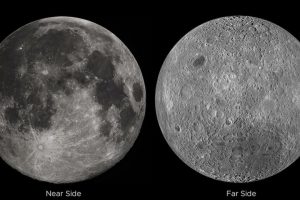
© Shutterstock
In the delicate embrace of winter, the miracle of snowflakes unfolds – each a unique gem in the crown of nature’s perfection.
Musa Sattar, London, UK – Deputy Science Editor
In the quiet embrace of winter, a spectacular dance unfolds, one that paints the world in a blanket of pristine white. At the heart of this enchanting spectacle lies a wonder of nature – the humble snowflake. Look closely, and you’ll discover a tiny, intricate masterpiece that showcases the flawless artistry of the natural world.
Picture this: a pristine snow-covered landscape, a canvas upon which nature unveils its purest form of elegance. But what exactly are these mesmerising snowflakes, and why do they dazzle us with their radiant intricacy?
Each snowflake, a fleeting sculpture of ice, begins its journey as a minuscule ice crystal. High in the chilly embrace of the clouds, these crystals form around dust particles suspended in the air. As they gather moisture, intricate hexagonal structures emerge, serving as the blueprint for the dazzling artistry that awaits.
Now, you might wonder, how can something so delicate and tiny be so breathtakingly intricate? The answer lies in the fascinating dance between temperature and humidity. As a snowflake descends, it experiences a medley of climatic conditions, sculpting its unique shape. The path it takes, the humidity it encounters, and the temperature fluctuations it braves all contribute to its individuality. Scientists, however, since the time of Kepler some 400 years ago, remain mystified by how microenvironments in the air dictate the shape of the snowflake. As Henry David Thoreau, an American philosopher, once remarked, ‘How full of the creative genius is the air in which these [snowflakes] are generated!’
Imagine each snowflake as a masterful ice architect, creating its design in response to the ever-changing atmospheric conditions. It’s like a ballet in the wind, where each flake pirouettes through the sky, embracing its distinct form, and finally gracing us with its presence. Each snowflake begins as a mere speck, a minuscule droplet of water vapour that clings to a microscopic dust particle. From this unassuming start, a symphony of molecular architecture unfolds, reflecting the internal order of water molecules as they arrange themselves in predetermined spaces, forming the magnificent six-sided snowflake we all recognise.
As the snowflake descends, it encounters a world of ever-changing temperature and humidity. These subtle variations leave their mark on its form, crafting an intricate pattern that reflects the dance it took through the sky. The ice crystals that compose the snowflake exhibit this symmetrical beauty, reflecting the precise conditions in which they were born. At around 23 degrees Fahrenheit, we see the emergence of long, needle-like crystals, while at a slightly freezing 5 degrees Fahrenheit, the snowflakes take on a remarkably flat, plate-like structure.
Here’s the real kicker – no two snowflakes are alike. Yes, you read that right. Each snowflake, a singular work of art, showcases the boundless creativity of nature. This intricate individuality arises from the variation in the environment that the snowflake encounters on its journey to the ground.
You see, the process of crystallisation, where water molecules freeze into a hexagonal lattice, is influenced by countless factors. The temperature and humidity fluctuate as the snowflake descends, crafting a unique path for each one. It’s like a cosmic fingerprint, a one-of-a-kind testament to the awe-inspiring diversity that resides within the simplest elements of our world.
But let’s not forget the delicate perfection in their symmetry. When you gaze upon a snowflake, it’s as if you’re peering into a microscopic kaleidoscope. Every branch, every facet, every delicate curve mirrors the others with incredible precision. It’s nature’s way of showcasing symmetry in its purest form, reminding us of the harmony that exists even in the midst of chaos.
So, the next time you catch a snowflake on your mittens, take a moment to marvel at the science woven into its beauty. It’s a fleeting encounter with flawless perfection, a reminder that even in the coldest moments, nature weaves its magic to remind us of the astounding world we inhabit.
In the tapestry of life, snowflakes are the delicate stitches that bind us to the awe-inspiring symphony of nature. A reminder that even in the chilliest of moments, beauty and perfection can be found, if only we take the time to look.
And as you contemplate this remarkable dance of ice and air, ask yourself: Is there not a Designer, a Supreme Creator, Who is responsible for these delicate yet mesmerising structures? A force behind the intricate elegance, a genius orchestrating the breath-taking beauty, and a purpose in the uniqueness of every snowflake that graces our world? Perhaps in the beauty of a snowflake, we find a whisper of an answer, a glimpse into the awe-inspiring mystery of creation.
About the Author: Musa Sattar has an MSc in Pharmaceutical Analysis from Kingston University and is also serving as the Assistant Manager of The Review of Religions.
Further Reading:
https://www.americanscientist.org/article/the-formation-of-snow-crystals
https://phys.org/news/2011-12-snowflake-science-physicist-snowflakes-thin.html
https://www.scientificamerican.com/article/snowflake-structure-still-mystifies-physicists/
https://www.newscientist.com/article/mg25233653-800-kenneth-libbrecht-interview-a-grand-unified-theory-of-snowflakes/
Kenneth Libbrecht, The Secret Life of a Snowflake: An Up-Close Look at the Art and Science of Snowflakes (U.S.: Voyageur Press Inc., Illustrated edition, 2009).




Add Comment